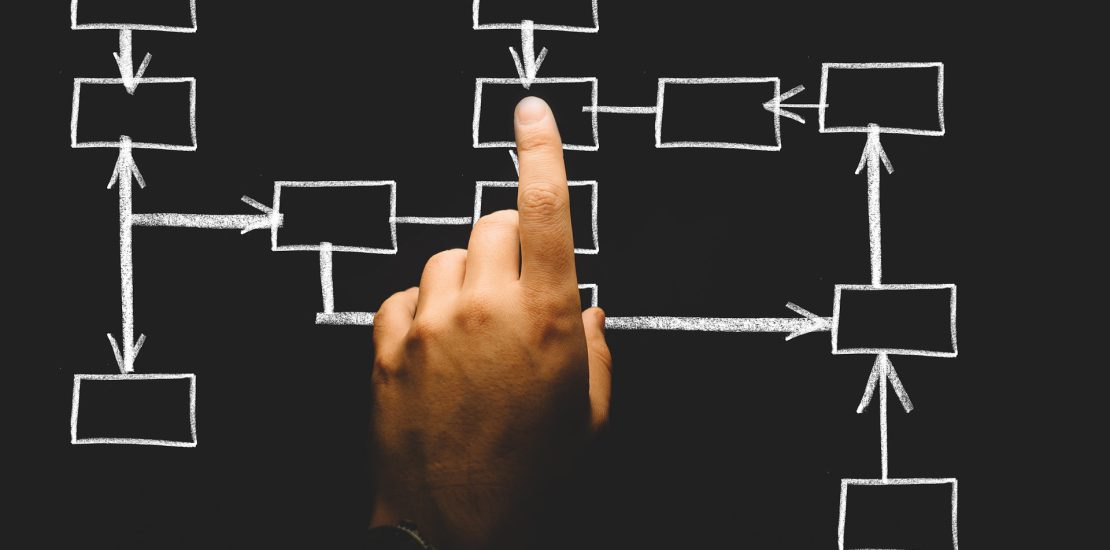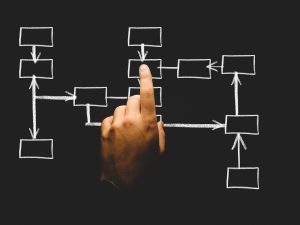- October 22, 2022
- Posted by: andreag
- Category: High PerformanceInnovationInternal ImprovementSystems-Process-Improvement

By Erin Bellotte (Note: this is the 2nd of two posts on PA tools and theory)
While the specific journey and the outcomes for each Process Advantage project will look different, the system Professional Growth Systems codified drives the results in a consistent manner. Utilizing the theories and tools gleaned from the leaders we studied, PGS created a three-phase approach to process improvement: Discovery, Design and Implementation.
 Perhaps the most important phase of the three, a strong Discovery, sets the organization up for success. In this phase a series of surveys, interviews, and data mining allow PGS to both truly analyze the current state of the process, as well as gauge if conditions are ripe for change. Without the right leadership buy-in and culture at the organization, even the simplest of process improvements will fail. Why? Because the employees and leadership will not follow through on the sustainability of the project. A comprehensive Discovery report is provided to the project steering committee with recommendations on any additional “Pre-Work” required to ensure that the right communication, resources, and employee engagement is in place prior to the next phase, Design.
Perhaps the most important phase of the three, a strong Discovery, sets the organization up for success. In this phase a series of surveys, interviews, and data mining allow PGS to both truly analyze the current state of the process, as well as gauge if conditions are ripe for change. Without the right leadership buy-in and culture at the organization, even the simplest of process improvements will fail. Why? Because the employees and leadership will not follow through on the sustainability of the project. A comprehensive Discovery report is provided to the project steering committee with recommendations on any additional “Pre-Work” required to ensure that the right communication, resources, and employee engagement is in place prior to the next phase, Design.
The Design phase looks at the nuts and bolts of the process. The project team is representative of those employees in the organization who are actually doing the work, so that the right process flow is captured. Additionally, many of these employees already are Process Improvement aficionados who have thought about how their work could be better, it’s purely a matter of giving them the tools and voice to bring these ideas to light.
Once all the rubs, or pain points, are identified the team will be taken through a series of brainstorming activities to come up with the Redesign, or how the process should look moving forward. Prior to closing the Design phase, the new design is vetted with leadership and key stakeholders who were not on the project team. This alignment and vetting process allows time for consideration of any special conditions that the design team did not foresee. Once the Redesign has all the approvals, a list of actions and timeline for completion will be taken into the third and final phase: Implementation.
The Implementation Phase takes the work completed during Design, and builds it into a formal Implementation Plan, which identifies who will be completing the work and when. PGS continues to guide the conversation and works with action owners to commit to deadlines based on their work schedule. This collaborative approach and allowance of the action owner setting their targeted deadlines, generates more accountability to hit their targets. After the Implementation Plan is drafted, a recurring Accountability Meeting is set, where each team member will provide a brief update on their work, progress towards their goals and if any support or resources are needed.
Throughout this project, the Steering Committee and Leadership teams are provided regular updates on the progress. These progress updates serve as a two-way communication to ensure all stakeholders align with the project’s direction and support can be provided to the project team and greater organization. PGS will work hand in hand with the project team, Steering Committee and Leadership on resource gaps or delays in decision making, to maintain momentum. It is with this momentum and drive for action from all parties that the best results are generated.
Success Story:
As evidenced through the history and our experience with Process Advantage, the organization’s leadership and culture play a large role in the success of any process improvement. Without a healthy environment for accepting change, organizations will struggle to make meaningful impact with improvement projects.
The University of Alaska Fairbanks, understood that there were better ways to get the work done. Over the last decade, they have worked closely with PGS to understand Process Advantage, and have reaped the benefits of creating a culture of improvement at their organization. They recognized that because Process Advantage is a repeatable process and tool set, they would be able to work with PGS to create a Performance Improvement Team that can continue to work on project improvements, without the need of calling in a PGS consultant every time.
In the three years after they committed to fully training a Process Improvement Team and allocated resources to the team to lead change, they saw $474,000 per year in savings including effort and new revenue potential. As these projects and savings were shared, more employees around the organization understood that their peers’ work was being improved, and have requested help for their departments. It has snowballed into an avalanche of improvement over time, with projects creating $750,000 per year in savings or cost avoidance between 2012 – 2018. They did not stop there, however. The team has recently completed 7 additional projects with 7 more underway as of writing this article in Fall 2022. None of this would be possible if it weren’t for the UAF leadership team’s support and dedication of resources to complete the projects.
Just like UAF, if you think there can be a better way at your organization, you can request a Discovery Assessment to see if Process Advantage can help your team. Better is just a click away.



